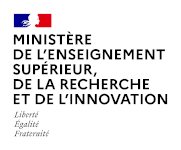Open Government Partnership / Third Open Government National Action Plan for the United States of America
Introduction
Open government has long been a cornerstone of democracy in the United States. Principles of transparency and an accountable, responsive government are embedded in Federal law and the U.S. Constitution, and the United States was one of the first countries in the world to adopt an access to information law — the 1966 Freedom of Information Act. Building on this longstanding tradition, President Obama early in his Administration launched the Open Government Initiative that has Catalyzed significant steps to open up the Federal government, make government more efficient, and provide citizens with unprecedented access to government information. The United States reached another important open government milestone in 2014 when President Obama Signed legislation passed unanimously by the U.S. Congress, requiring Federal agencies to publish their spending data according to clear standards that will help improve the quality of government information, help inform government decisions, and make government work more efficiently for the American people.
…
The Administration is now issuing the third U.S. Open Government National Action Plan, which includes a wide range of actions the Administration will take over coming months to strengthen, deepen, and expand up on U.S. efforts to date. In putting together the third NAP, the United States engaged in unprecedented consultations inside and outside of government, including with a broad range of U.S. departments and agencies and subnational governments as well as the general public, civil society groups, foundations, academia, and the private sector. Consultations on the third NAP began with a collaborative workshop with government agencies and civil society organizations and included small and large-scale meetings to discuss and refine the commitments in this document. The Administration also sought input via the White House’s Open Government Blog and other interactive online platforms. Civil society has provided valuable feedback throughout the implementation of both the first and second NAPs through regular progress reports and a model action plan that informed many of the commitments in this third NAP.
…
Access to information
…
8. Advance Open Science through Increased Public Access to Data, Research, and Technologies
By providing access to government-funded scientific information and data, Federal agencies leverage scientific investments while catalyzing American innovation and novel applications for business and entrepreneurship. Federal agencies can also take steps to make the research they support more open. In September 2015, the Office of Science and Technology Policy encouraged Federal science agencies, in designing citizen science and crowdsourcing projects, to take steps to ensure that datasets, code, applications, and technologies generated by such projects are transparent, open, and freely available to the public. To continue momentum and collaborations for open science, the Office of Science and Technology Policy will:
• Increase Public Access to Results of Federally Funded Scientific Research. In 2013, the Office of Science and Technology Policy directed Federal science agencies to develop plans to increase access to the results of unclassified research supported wholly or in part by Federal funding. The public’s ability to search, retrieve, and analyze both scientific publications and research data leverages Federal investments and provides new opportunities for scientific advancement and economic growth.The Office of Science and Technology Policy will work to ensure that all Federal agencies that spend more than $100 million per year on research and development finalize plans and implement policies and programs to make scientific publications and digital data resulting from Federally funded research accessible to and usable by scientists, entrepreneurs, educators, students, and the general public.
• Encourage Increased Public Participation in Open Science Using Low-cost Scientific Instruments. One step that the Federal government could take to increase participation in citizen science and crowdsourcing is to develop hardware and software tools that are affordable, easy to use, and easy to improve. The Administration will kick off an interagency dialogue to identify best practices for how the Federal government can foster the development of low-cost scientific instrumentation and work with stakeholders through workshops and ideation challenges to identify opportunities for getting them into the hands of volunteers, such as air-quality monitors or wearables for monitoring personal health. Using these low-cost scientific instruments, volunteers can contribute their expertise to help advance a variety of scientific and societal goals






